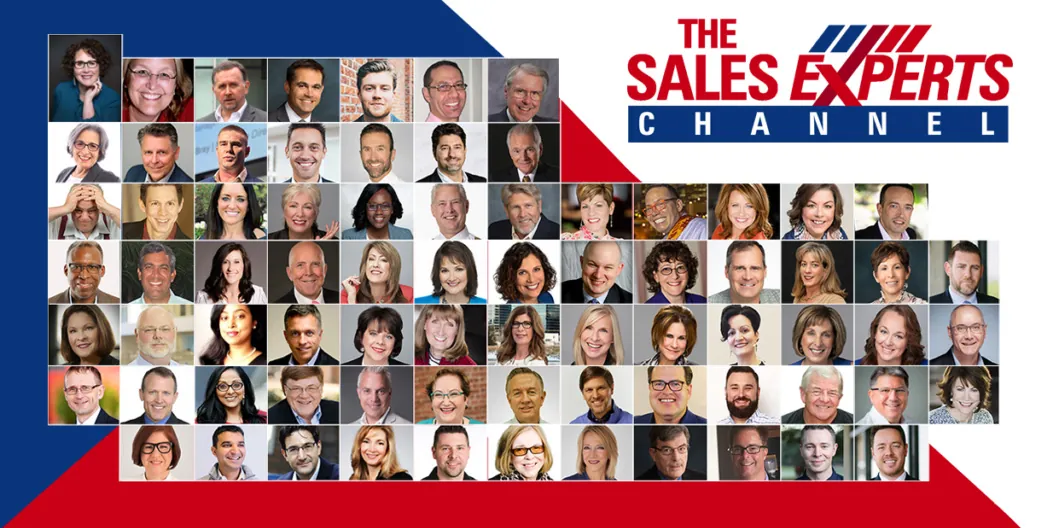What is Sales Enablement and How Can It Benefit Your Team?

It’s a phrase that’s often bandied about as one of the key components to a successful sales process and team. But what precisely is sales enablement? The short answer – a lot of different things. The longer answer – the technology, marketing content, information, and knowledge that helps your sales reps to be successful.
A still longer and more complete answer: Included under this sales enablement umbrella – your CRM, sales tools, marketing collateral, sales training, product knowledge, buyer personas, communication styles, sales coaching, and a whole array of other things. In fact, it wouldn’t be entirely inaccurate to say that sales enablement entails everything that your sales team needs to be successful in finding leads, qualifying opportunities, and closing deals (after all, even sales process becomes understood and implemented as a result of your sharing knowledge with the team).
Continuing the short and long theme – the short answer is that sales enablement benefits your team by providing them the arsenal they need to be productive, contributing sales reps. The long answer involves looking at the broad subcategories of sales enablement and seeing how they contribute to the overall sales plan and process. So let’s go ahead and do that.
Technology
Obviously your CRM – the most common piece of sales technology – is often your most powerful piece of sales enablement technology. It allows your sales reps to record information about the prospects in their pipeline, what stage of the process they’re in, the touch points and result of those contacts, notes about each prospect, and a whole host of other information to track (depending on how customized and granular the program is).
It also allows your sales reps to stay organized and be on top of their game – able to pull up information with a few keystrokes or mouse clicks.
But that’s just one aspect of technology. Remote videoconferencing programs, such as Zoom, Google Meet, WebEx Meeting, and so on, have become even more important than ever before in the COVID-19 pandemic era. In certain industries and sales roles, auto-dialers and automated email platforms are also part of the technology sales map (particularly in high-velocity verticals).
New sales technologies are also starting to become more commonly used, such as AI chatbots and text analysis software. The former can handle a lot of frontline questions from prospects and help redirect them to the right department or sales rep, whereas the latter is becoming increasingly sophisticated at learning how to recognize a lead’s likelihood of converting to the next step, based on what they write.
Further, other existing programs that fall under the heading of sales automation software – applications that help streamline the sales process and increase sales rep productivity. Whether it’s a prospecting tool such as LinkedIn Navigator, engagement assistants such as sales outreach playbooks, lead scoring models that improve the accuracy of the qualifying process, or cloud-based proposal builders that reduce the hours needed to construct a proposal, sales automation software frequently can be integrated right into your existing CRM. This helps turn your CRM into the true hub of your sales process and gets it closer to being a one-stop shop for your sales reps to traverse the pipeline and keep tabs on vast volumes of leads, prospects, and opportunities.
As all of the above indicates, it’s highly likely that technology will play an ever-larger role in the sales world as we proceed deeper into the 21st century. Therefore, technical acumen will correspondingly become a vital skillset for sales reps to acquire. So, too, will data analysis and interpretation – which will be essential in correctly reading the results and information provided by the sales enablement technology.
What won’t happen – despite the gloom and doom predicted in some quarters – the replacement of sales reps by AI. As we saw in the late 20th and early 21st century, personal, human contact and relationship building became one of, if not the, primary drivers of the sales process. People buy from who they like and trust. And despite the increasing sophistication of AI and chatbots, we’re still a very long way away from AI reaching the complex, nuanced communication that takes place between humans.
Because AI is still very much in a rudimentary state within the context of the sales process, its function is largely limited to two areas: assisting a human sales rep (such as the aforementioned text analysis programs) and completing transactional sales with buyers.
Notice what’s not covered under AI? Consultative sales. That’s a much more nuanced, advanced selling model and process that AI is nowhere remotely capable of handling. Although chatbot technology, natural language processing, and neural networks have made huge advancements in recent years, they’re still very much based on an input leads to output structure that quite simply can’t match the complexity and unpredictability of human conversation.
Additionally, as one study found, the cost of neural language processing (NLP) can very quickly become cost-prohibitive. In fact, for more complex projects, the costs could literally shoot up to $10 million or more. That’s far beyond the budget of the majority of businesses in this country (and the world), and for something that still won’t be able to handle consultative sales. That’s not to say that AI doesn’t have its place – it clearly does. But to reiterate, you won’t see AI sales reps replacing humans any time in the future.
Marketing Content
When people think of marketing content, they often think of professionally designed and printed materials or even advertising (Note: advertising and marketing are actually two separate things). From a sales enablement perspective however, marketing is so much more than just the collateral that explains and highlights your offerings.
It’s literally your website itself. It’s your blog posts (Many of our sales reps share relevant blog posts and other content to people and organizations in their pipeline, because it’s useful information for the clients and leads). It’s things like your case studies, which some studies indicate is the single-most effective piece of marketing material you can provide.
Having this marketing content enables sales reps to pass along information and material that speaks specifically to your buyers’ situation. It frequently reduces the amount of time and emails needed to answer a question. As an example, let’s say you have a client that wants to know what work you’ve done with governmental organizations. Rather than a lengthy phone call or email, if you have a case study or two where you worked with a governmental organization, you can send the case study and schedule a time to follow up and discuss the study, the buyer’s situation, and how your own organization can help them.
In the majority of instances, marketing’s chief sales enablement will occupy the early and middle stages of the sales pipeline – helping to establish sales rep credibility as an expert and foster a relationship. As you get later into the sales process, marketing still has a role to play, but largely a supplemental one – a way of helping organize and present information in a call where a buyer is close to making a decision, for example.
And as we’ve noted before, the best marketing content and sales results will arise out of alignment and a close working relationship between sales and marketing. Your sales reps are well-positioned through their conversations with buyers about what the marketplace needs to know; their goals, desires, and problems; and what obstacles in the sales process marketing content and collateral can help overcome. Marketing can then take that information and craft material that speaks directly to the buyer in their language – whether on an individual level (as in communication style, dialect, etc.) or a macro level (such as writing marketing copy addressed to a specific target industry).
Information and Knowledge
Too often, we see sales professionals and organizations think of information and knowledge purely in terms of product knowledge. While this is certainly important to know – you can’t effectively sell something you don’t know the ins and outs of – it is by no means the only information needed to become a successful sales professional and team.
That also involves knowing things like your company’s sales process, your buyers’ and target markets’ industries, buyers’ common pain points, how to best use sales enablement technology and marketing content, the competition, etc. The list goes on and on. It’s a cliche that knowledge is power, but it’s true in the case of sales reps. Knowing, for example, the primary communication styles and what style a given prospect prefers, will help you build relationships faster and close more deals than a sales rep who isn’t aware of that information.
Bluntly: without knowledge, without information that goes far beyond baseline product expertise, you and your team will have a very difficult time being successful at sales. Out of all the sales enablement categories, it is the most primary, the most important one. What’s the most effective and fastest way to increase your team’s sales knowledge? Get sales training.
Expanding further on that idea – your sales training should be fully customized to your industry, company, sales process, target markets, and goals. For example, you might notice that many of your sales reps are doing well with most of the process, but they’re struggling with closing deals. You would want to have sales training that has a laser focus on the closing phase of the sales process – with relevant examples, role-plays, and so on that speak directly to the types of interactions, language and buyers your sales reps encounter on a daily basis.
Another key component of information and knowledge as relates to sales enablement – the importance of coaching to and reinforcing learned knowledge and skills. This also involves the other things we mentioned above – technology and marketing content. A one-off session being trained in say, the closing phase or your CRM, will only have a limited short-term return. Why? Because we forget at least half or more of what we’ve learned 24 hours after learning it. So for that new knowledge and information to stick, we need to constantly reinforce it, persistently be coached in it.
Nor, it should be added, can sales professionals become complacent in their knowledge and information. No matter how tenured, no matter how skilled they are, even A-level reps need to constantly seek and acquire new knowledge and skills. A perfect example of this necessity is our current COVID-19 crisis – a catastrophic event that completely upended the sales landscape and world we once knew and totally transformed everything. Things rarely hold in stasis – there’s always evolution and change taking place. Sometimes it will happen so slowly we don’t notice it until we look back from a long view. Other times, like now, it will be an abrupt fast roil, churning alterations sometimes literally by the week (as some sectors have experienced in this era).
As we can see, sales enablement is a broad, deep topic that spreads over multiple sales-related areas and has a lot of pieces to it. The next time we discuss sales enablement, we’ll look at how to improve the sales enablement adoption rate within your team.

- Account Planning (11)
- Awards (51)
- Client Testimonial (37)
- Personal Branding (19)
- Podcast (11)
- Research (70)
- Sales Career Development (85)
- Sales Coaching (154)
- Sales Consulting (133)
- Sales Culture (164)
- Sales Enablement (346)
- Sales Leadership (110)
- Sales Management (243)
- Sales Negotiation (16)
- Sales Prospecting (120)
- Sales Role-Playing (18)
- Sales Training (233)
- Selling Strategies (256)
- Soft Skills (67)
- Talent Management (92)
- Trusted Advisor (27)
- Virtual Selling (42)
- Webinar (12)




























